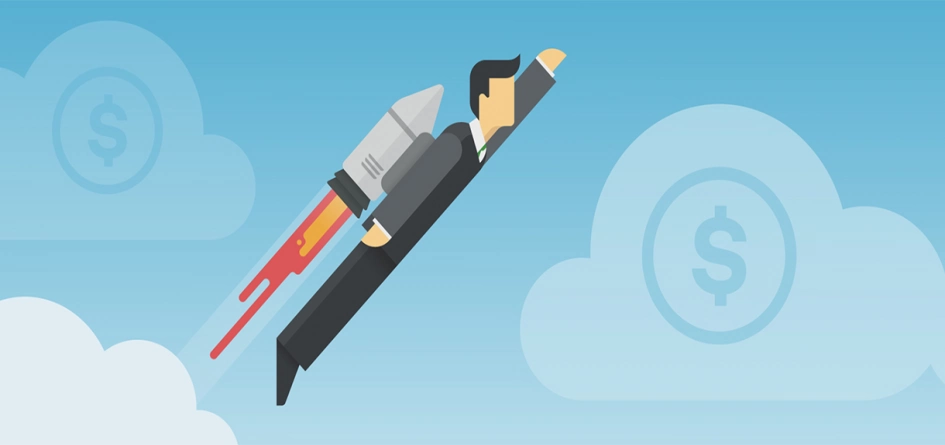

The past decade has witnessed a drastic change in the sales cycle with consumer interests being at the forefront. With Google search just a fingertip away and multiple channels of interaction (social media, websites), people revel in conducting research before making the first connection. Therefore, sales has become more about meeting customer needs in real-time. This is where inbound marketing enters the scene.
HubSpot describes inbound marketing as “attracting customers through relevant and helpful content and adding value at every stage in your customer's buying journey. With inbound marketing, potential customers find you through channels like blogs, search engines, and social media.”
The “attracting, converting and delighting” process lays the groundwork for getting discovered by interested parties and generating buyer-initiated conversations. It reduces the time and rejection rates associated with prospecting using outbound methods like trade shows, billboards, and cold-calls.
One of the top inbound marketing methodologies is leveraging the power of social media to get discovered by the target market and a platform that can significantly boost your inbound sales is LinkedIn.
The professional networking site has over 675 million users, and the average time spent on the site by a professional is 17 minutes! Furthermore, 4 out of the 5 members are key decision-makers. A recent study by HubSpot found that LinkedIn gives the highest visitor to lead conversion rate.
There are multiple ways you can expand your inbound sales interest and revenue by making LinkedIn an integral part of your digital marketing strategy.
LinkedIn is one of the top 5 websites that Google indexes regularly in search. Your company can easily pop up in Google’s top SERPs by doing the following
There is a fine line between sharing resourceful content and just spamming everyone’s feed. LinkedIn is a great content sharing platform but for it to work to drive inbound sales, mix up your content feed. Plan your content calendar and be aware of emerging industry news and trends.
Expand the reach of your content by using Linkedin Pulse, which is a news aggregation feed within LinkedIn. It is designed for members to share self-published content to a target audience, and the platform generates news stories, blog posts, and insights.
Social media is a two-way stream, and LinkedIn is a great place to get conversations started. Participate in industry groups (you can start one too!) and share relevant information/tips that people want to read or address specific issues raised in discussions. Nobody wants to associate with a person just posting random or self-promoting content.
You can also position yourself as a trusted resource by taking part in the Q&A section on LinkedIn. Find and answer questions relevant to your expertise and give the best answer. People will start trusting you and following you. Also, a green star will get added to your profile if you have the best answer in your industry.
Being active in professional groups is an excellent way to connect, network, and prospect!
4) Target & Optimise your Posts
If you want your content to be shared and discovered, then make sure it is optimised. Frequently post blogs and articles with visually appealing content, keywords, and tags. This is a very effective way that can help you rank higher in the search engines. You can use SlideShare to draw in readers with visually-stunning content.
Further optimise your content by including attention-grabbing headlines, clear captions, and links.
Create backlinks from your LinkedIn posts to your website, blog, and company LinkedIn page.
Also, experiment with posting at different times and days to understand when your target audience’s engagement rate is high. Track multiple posts and ask, “Which posts have gotten the highest level of engagement and are there any commonalities between them (timing, topic, etc.)?”
One of the most powerful features of LinkedIn is the ability to build a large professional network. Expand your circle by adding co-workers, clients, prospects, etc. and don’t stop here. Sometimes, a future customer is just a connection away. Use mutual connections to get an introduction to the third party, as people are more likely to respond if there is a common ground. Exchange a few pleasantries and you can set yourself up for a call to get additional information or help.
The golden ticket of LinkedIn is its InMail feature, which allows you to send a personalised and targeted message to prospects. Use your industry knowledge and research to craft a short and compelling message to your prospect. Tell them who you are, what you do, and include a point of commonality (if there is one). It might surprise you just how a friendly InMail opens the door to a lifelong client relationship!
LinkedIn is a huge arsenal to have in your sales and inbound marketing toolkit. From building connections, increasing visibility, and helping your research prospects, to even making an introduction for you, the social media platform can boost your efforts and ROI in multiple ways. The professional networking site enables you to be more efficient by reducing time spent chasing non-targeted leads and spammy cold calls, to create a lean, sales machine!
Does your inbound marketing strategy include LinkedIn to drive sales? Share how you use this platform with us in the comments section.